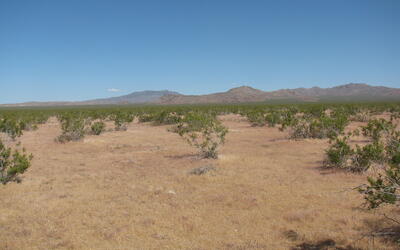Non-native plants consistently drive changes in functional traits of plant communities
Non-native plants have specific traits that cause consistent and predictable changes across ecosystems that can lead to wide-ranging changes in ecosystem function and associated ecosystem services. These are the findings of a new synthesis paper, published in the Proceedings of the National Academy of Science, September 19.
Native plants are foundational to a functioning ecosystem
Essential plant traits like root size, leaf shape, timing of growth, rate of photosynthesis, and many others, have a large influence on the storage and cycling of nutrients, water, and chemical elements. These basic ecosystem functions are not only essential for supporting life within ecosystems, but are critical for regulation of global processes like the carbon and nitrogen cycles.
When nonnative plants are introduced to an ecosystem, they have the potential to alter ecosystem function, especially if the nonnative plant becomes invasive. Until now, researchers were unsure which traits associated with nonnative plants are driving changes in ecosystem function, and whether those changes are consistent across different types of ecosystems.




Synthesizing plant community data across the United States
Since 2022, USGS scientists have been working with invasive plant researchers across the United States to investigate the relationship between nonnative plants and their invaded plant communities. This collaboration began through the National Center for Ecological Analysis and Synthesis (NCEAS) and has continued through the USGS John Wesley Powell Center for Analysis and Synthesis. Initial studies with NCEAS focused on compiling plant community data across the U.S. into one, large dataset, to investigate the vulnerability of ecosystems to nonnative plant invasion.
In this newly released synthesis, completed by the Powell Center working group, researchers combined the NCEAS dataset on plant community composition with data on individual plant traits for six ecoregions: Eastern Temperate Forests, Great Plains, Mediterranean California, North American Deserts, Northern Forests, and Northwestern Forested Mountains. Altogether, they analyzed data from over 75,000 plots across the United States to answer questions about the broader influence of invasive plants on the abundance of native species, and the composition and diversity of functional traits within plant communities.




Nonnative plants alter fundamental characteristics of ecosystems
Across ecoregions, researchers found that plant communities with a higher abundance of nonnative species were shorter and shallower, and dominated by plants with traits that support high rates of nutrient acquisition, and low reliance on symbiotic root fungi for nutrient uptake. This overall shift in plant community traits likely explains observed post-invasion changes in ecosystem function, like altered carbon storage and increased water use in upper soil layers. This knowledge – that invasive species consistently and predictably alter ecosystem functions through plant community shifts – will aid resource managers in predicting the impacts of invasive species, and the potential benefits of management.
Get Our News
These items are in the RSS feed format (Really Simple Syndication) based on categories such as topics, locations, and more. You can install and RSS reader browser extension, software, or use a third-party service to receive immediate news updates depending on the feed that you have added. If you click the feed links below, they may look strange because they are simply XML code. An RSS reader can easily read this code and push out a notification to you when something new is posted to our site.

